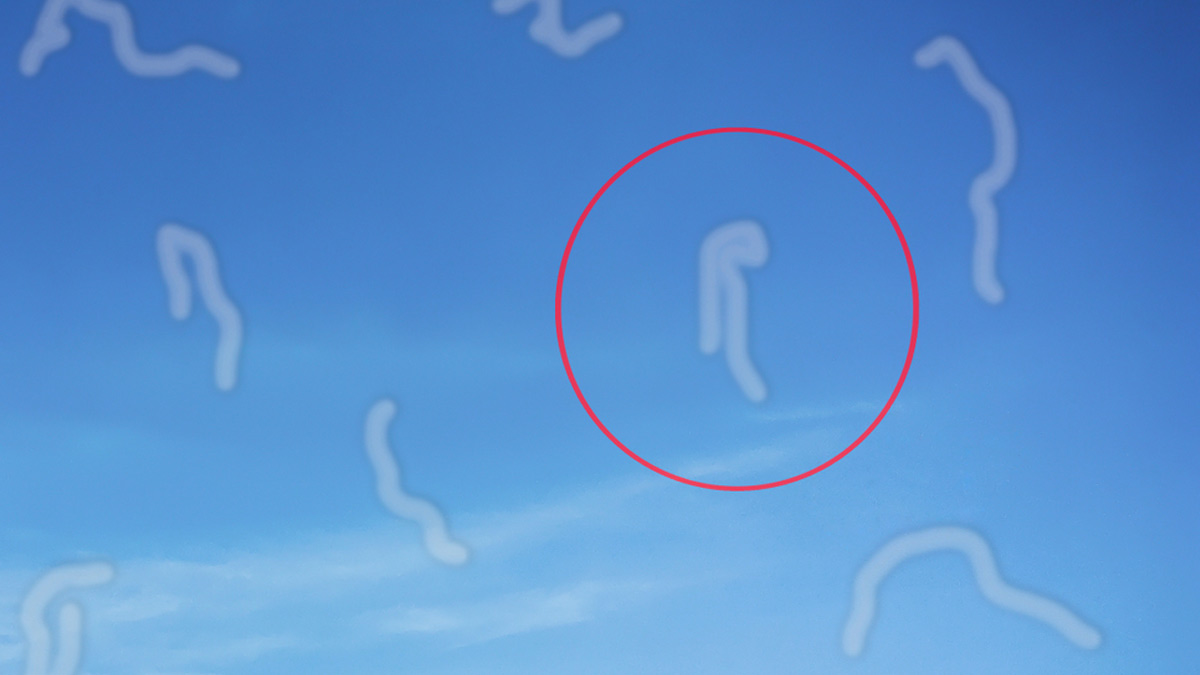
Have you ever experienced the puzzling phenomenon of seeing moving squiggly shapes in your line of vision? If so, you are not alone. Many individuals have reported witnessing these peculiar visual disturbances at one point or another, leaving them bewildered and searching for answers. While it can be unsettling to observe such elusive patterns and movements within your eyesight, understanding the underlying causes and potential implications can help shed light on this intriguing phenomenon. To know more about it, we spoke to Dr Ajay Sharma, Ophthalmologist and Chief Medical Director - EyeQ.
Table of Content:-
"Small forms called eye floaters sometimes develop in your field of vision. They may resemble patches, cobwebs, splotches, threads, or wavy lines. Floaters are unharmful and an expected part of ageing," he said. "Call your doctor if they worsen, emerge suddenly, accompanied by bright flashes, or if you experience any vision loss as this may be a sign of something more serious," he added.
Causes of Eye Floaters
According to Dr Sharma, during a sporting match, a punch, ball, or other impact to the eye could result in an injury, giving rise to floaters. "Other than this, if you work in a hazardous work environment and do not use safety goggles while working, you are at risk of getting your eyes hurt," said the doctor.

Also Read: Summer Eye Safety: Essential Tips for Swimmers And Beachgoers
Symptoms Of An Eye Injury And Floaters
The signs and symptoms of an eye injury and floaters include:
- Pain and vision issues
- Enlarged eye
- Unusually large pupils
- Eye irritation
- Difficulty moving the eye
"The degree of an eye injury determines how it is treated. Rest and a cold compress are effective treatments, but emergency care is needed for more severe wounds, including punctures or chemical burns," said Dr Sharma.
Treatment For Serious Floaters
Dr Sharma said, "Unless there are additional issues like retinal tears, perforations, or detachments, you usually do not need treatment for floaters." He added, "Your doctor will instead keep an eye on floaters. In rare instances, your eye doctor might suggest surgery as a course of treatment."
Vitrectomy
Surgery to remove the eye vitreous is called a vitrectomy. He said, "Through a tiny incision, the surgeon extracts the vitreous during this surgery. They then swap it out for a fluid that helps your eye maintain its shape that resembles the vitreous." The doctor added that a vitrectomy does not usually get rid of all of your floaters, though.

Also Read: What Is Your Eye Telling You? Expert Explains Eye Twitching, Its Causes And How To Stop It
Laser Vitrectomy
"A special laser is used in this operation by an eye surgeon to disperse floaters so you do not notice them as much," said Dr Sharma. While some people benefit from this operation, others may not, he added.
Dr Sharma said that laser vitreolysis is still debatable. "Although some people may have symptomatic alleviation from this treatment, it is an invasive method for a problem that does not endanger vision. Therefore, more research is required to determine the best time for this treatment," he added.
Conclusion
Eye floaters are visual alterations that resemble spots or wavelike lines. They are typically brought on by ageing and are frequently not cause for an alarm. However, occasionally they could be a symptom of an underlying medical disease or indicate something more dangerous, like a detached retina.
The majority of the time, they go untreated, but occasionally, if they are severe, surgery may be necessary. Contact an ophthalmologist, or an optometrist, or go to the emergency room if your vision changes or your floaters become more troublesome, the doctor concluded.
[Disclaimer: The information in this article is provided by a registered dietician. However, we recommend you consult your healthcare provider for a diet plan as per your body's requirements.]
Image Credits: Shutterstock, freepik
Also watch this video
How we keep this article up to date:
We work with experts and keep a close eye on the latest in health and wellness. Whenever there is a new research or helpful information, we update our articles with accurate and useful advice.
Current Version